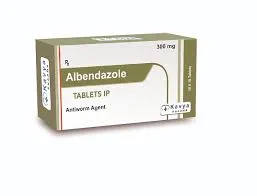- Afrikaans
- Albanian
- Amharic
- Arabic
- Armenian
- Azerbaijani
- Basque
- Belarusian
- Bengali
- Bosnian
- Bulgarian
- Catalan
- Cebuano
- Corsican
- Croatian
- Czech
- Danish
- Dutch
- English
- Esperanto
- Estonian
- Finnish
- French
- Frisian
- Galician
- Georgian
- German
- Greek
- Gujarati
- Haitian Creole
- hausa
- hawaiian
- Hebrew
- Hindi
- Miao
- Hungarian
- Icelandic
- igbo
- Indonesian
- irish
- Italian
- Japanese
- Javanese
- Kannada
- kazakh
- Khmer
- Rwandese
- Korean
- Kurdish
- Kyrgyz
- Lao
- Latin
- Latvian
- Lithuanian
- Luxembourgish
- Macedonian
- Malgashi
- Malay
- Malayalam
- Maltese
- Maori
- Marathi
- Mongolian
- Myanmar
- Nepali
- Norwegian
- Norwegian
- Occitan
- Pashto
- Persian
- Polish
- Portuguese
- Punjabi
- Romanian
- Russian
- Samoan
- Scottish Gaelic
- Serbian
- Sesotho
- Shona
- Sindhi
- Sinhala
- Slovak
- Slovenian
- Somali
- Spanish
- Sundanese
- Swahili
- Swedish
- Tagalog
- Tajik
- Tamil
- Tatar
- Telugu
- Thai
- Turkish
- Turkmen
- Ukrainian
- Urdu
- Uighur
- Uzbek
- Vietnamese
- Welsh
- Bantu
- Yiddish
- Yoruba
- Zulu
Lis . 11, 2024 19:11 Back to list
enrofloxacin injection for sheep
Enrofloxacin Injection for Sheep An Overview
Enrofloxacin is a widely used fluoroquinolone antibiotic that has garnered significant attention in veterinary medicine, particularly for its application in sheep farming. This broad-spectrum antibacterial agent is effective against a variety of gram-positive and gram-negative bacteria, making it a valuable tool in managing infections in livestock. In this article, we will explore the characteristics, uses, dosages, and safety considerations of enrofloxacin injection in sheep.
Mechanism of Action
Enrofloxacin functions by inhibiting bacterial DNA gyrase and topoisomerase IV, enzymes critical for DNA replication and transcription. This disruption effectively halts the proliferation of bacteria, allowing the animal's immune system to eliminate the infection. Its fast-acting nature means that enrofloxacin can often alleviate clinical signs within a short period of administration.
Indications for Use
Enrofloxacin is indicated for the treatment of various bacterial infections in sheep, including but not limited to respiratory tract infections, urinary tract infections, and skin infections. It is particularly beneficial in cases where the causative organism is resistant to other antibiotics. Conditions such as pneumonia, metritis, and foot rot can be effectively managed with enrofloxacin, supporting overall sheep health and productivity.
Dosage and Administration
enrofloxacin injection for sheep

The typical dosage of enrofloxacin for sheep is generally calculated based on body weight and varies according to the severity of the infection. A common recommendation is 2.5 to 5 mg/kg of body weight administered subcutaneously or intramuscularly. The specific dosage and treatment duration should be determined by a veterinarian, taking into account the individual health status of the animal and the nature of the infection.
It is crucial to follow the prescribed dosage and avoid overuse to reduce the risk of developing antibiotic resistance. Dosage adjustments may be necessary for lambs, pregnant or lactating ewes, and sheep with pre-existing health conditions.
Safety and Side Effects
Enrofloxacin is generally well-tolerated in sheep, but like any medication, it may cause side effects in some cases. Potential reactions can include gastrointestinal disturbances, such as diarrhea or vomiting, along with transient lethargy or reluctance to eat. More severe reactions are rare, but they can occur, emphasizing the importance of monitoring the animal after administration.
Additionally, there are regulatory aspects to consider. In many regions, the use of enrofloxacin in food-producing animals is regulated to prevent excess residues in meat and milk. Farmers should adhere to withdrawal times—periods after the last dosage during which the animal should not be slaughtered for food or their milk should not be consumed to ensure consumer safety.
Conclusion
Enrofloxacin injection is an important tool in sheep health management, effectively combating bacterial infections that can jeopardize the well-being of these animals. Its broad-spectrum efficacy, combined with a relatively low incidence of side effects, illustrates its role in veterinary therapeutics. However, responsible use is critical to minimize the risk of antibiotic resistance and ensure public health safety. Farmers and veterinarians should work closely to develop treatment plans that maximize benefits while adhering to regulatory guidelines, thus safeguarding both animal and consumer health. The careful application of enrofloxacin will continue to play a vital role in modern sheep farming practices.
-
Guide to Oxytetracycline Injection
NewsMar.27,2025
-
Guide to Colistin Sulphate
NewsMar.27,2025
-
Gentamicin Sulfate: Uses, Price, And Key Information
NewsMar.27,2025
-
Enrofloxacin Injection: Uses, Price, And Supplier Information
NewsMar.27,2025
-
Dexamethasone Sodium Phosphate Injection: Uses, Price, And Key Information
NewsMar.27,2025
-
Albendazole Tablet: Uses, Dosage, Cost, And Key Information
NewsMar.27,2025













